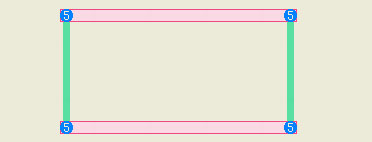|
A General Sudoku Logic Rank and Covering Sets |
|
Points.
Rank is the relative number of sets and linksets used to link a structure,
where rank 0 indicates equal numbers. More generally, rank measures the
number of unknowns in a region of logic and determines the number of linksets
required to cause eliminations. Sets,
Linksets, and Rank Rank is defined as the minimum number of linksets
required to link all candidates in a group of sets minus the number of
sets, or M
- N. Many Sudoku methods like fish are rank 0 have numbers of sets and linksets.
Rank 1 structures include most chains, empty
rectangles, and other fish such as finned fish and Sashimi. In Sudoku, chain-like structures are often drawn
with terminating strong links where the end candidates are not
connected to anything else, like the simple chain below.
To evaluate the rank of a structure, it must be
fully connected by linksets. This can always be done because every candidate
belongs to four sets, some of which are available as linksets. However, the
choice of sets makes a difference. If two sets are required to contain the
end candidates then the rank is 3 - 2 = 1, like the simple chain below.
When both ends can be contained in one linkset then this
structure becomes a simple loop like the X-Wing below, which has a rank of 2
- 2 = 0.
Complex structures may be fully connected by different combinations of linksets, which may use
different numbers of linksets. Each group of linksets may have its own rank
and cause its own eliminations. |


